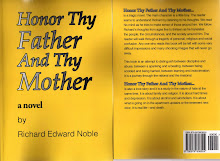John Pierpont Morgan 1837- 1913
By Richard E. Noble
“Morgan the Magnificent - If ever there thrived a money potentate whose fortune was preeminently eulogized as having been acquired by purity of method, that man was J. Pierpont Morgan.”
Morgan, unlike Rockefeller and Jay Gould, was not only adept in business and finance, but also in the art of personal propaganda.
His father, Junius S. Morgan, was a millionaire, and he was involved and became a partner with a George Peabody of the Peabody Company. George Peabody and Company were appointed the financial representatives in England of the United States of America at the onset of the Civil War. Mr. Gustavaus Myers - author, Historian and Journalist - claims in his book “History of the Great American Fortunes”, that they were guilty of “the most active treason”. He accuses them of conspiring with the British on behalf of the Confederacy against the Union Government while all the while being on the Union Government payroll.
J. Pierpont was a chip of the old block. At age twenty-four he pulled his first big deal.
In 1857 inspectors condemned a large number of Hall’s carbines as dangerous and unserviceable. About five thousand of these rifles remained in the army arsenal in New York City in 1861. Via a couple of intermediaries (Arthur M. Eastman and Simon Stevens) Morgan offered to purchase these five thousand riffles for $3.50 each. On August 5, 1861, General Fremont, at St. Louis, was offered these “new carbines, in perfect condition”. He agreed to buy them. The rifles were still in the New York arsenal, and still owned by the U.S. government at the time of the purchase. Morgan, after getting the order from Fremont, then notified his agents in New York to purchase the defective, condemned carbines. The carbines were bought for $3.50 each and sold to Fremont for $22.00 each. This was a $92,426 profit for Morgan and friends.
In an investigation in 1862 by one of the select Congressional Committees, the following was stated in their report;
“The Government not only sold one day, for $17,486, arms which it had agreed the day before to repurchase for $109,912 - making a loss to the United States of $92,426 - but virtually furnished the money to pay itself the $17,486 which it received.”
Upon investigation the Government decided that it had been cheated, but because the guns were ordered, delivered and issued to soldiers on the battlefield, they agreed to pay Morgan $13.31 per rifle. Morgan took the payment of $55,550 but then proceeded to sue the Government for breach of contract. The court, under a Judge Peck, ruled that a contract is a contract and that the government must pay Morgan the full amount agreed upon.
The soldiers who had these rifles explode in their faces due to their defective firing pins had no lawyers, never knew about their weapons being defective to start with, or were too dead to bother to sue anybody.
In the History of American Business and Industry published by American Heritage Publishing Co. and edited by American Heritage and Business Week - on page 194, I read about “The Morgan Gold Rescue”. In this scenario Morgan is hailed as the Banking hero who comes in to rescue president Grover Cleveland who is undergoing a mysterious gold shortage in the U.S. Treasury. Morgan, patriotically, offers to buy hundreds of millions of dollars worth of Government bonds with gold from his vaults in order that the government can maintain its Treasury Reserve of gold required by law.
Mr. Myers in his book has a much different story to tell. The mysterious loss of gold in the Treasury, Mr. Myers claims, was brought on by Morgan and friends in the first place.
Morgan and his banking associates all over the nation began turning in their gold certificates and notes. Very shortly it was the banks themselves that had all of the government’s gold in their various vaults. The banks did this knowing that the government would then be forced to issue bonds. This is exactly what the Treasury was forced to do. But Grover Cleveland, rather stupidly, was influenced to sell this bond issue to the Morgan banks. The Morgan banks quickly bought up all the government bonds at a low price and a high paying interest rate to them. They immediately sold the bonds at an even higher price, got themselves millions more in redeemable gold notes and quickly tuned them in for more Treasury gold. Thus they had the government caught in a revolving door where-by they not only bankrupted the Treasury of its present day gold reserve, but by trafficking the bonds on this money merry-go-round, they could also bankrupt future generations of Americans with a looming National Debt.
Newspapers finally got hold of the story and exposed the swindle to the people. The public outcry forced Cleveland to dump the Morgan syndicate and make a public, properly floated, bond issue which sold bonds directly to investors thus putting a stop to the revolving gold door.
Morgan and company did manage to gain themselves 62 million in bonds but America was saved the swindle on the additional 200 million dollar bond issue that the government had been forced into by Mr. Morgan and friends.
Subscribe to:
Post Comments (Atom)







































No comments:
Post a Comment